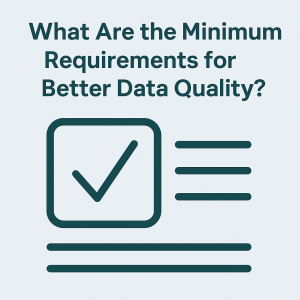What Are the Minimum Requirements
for Superior Data Quality?
Data quality is a term that gets thrown around a lot in conversations about analytics, business intelligence, system upgrades, and digital transformation. But what does it really mean to have “good” data—and what are the minimum requirements to ensure data quality is strong enough to support your business operations?
Let’s break it down.
Why Data Quality Isn’t Just About Cleanliness
Too often, data quality is equated with simply “clean” data. But data quality is much broader. It’s not just about formatting or filling in missing values—it’s about whether your data is usable, connected, consistent, and trusted across systems.
Ironically, striving for “perfect” data often leads to scope creep. The more you try to perfect every record, the more resources it consumes. That’s why defining your data quality requirements early is essential. Focus on what’s good enough to meet your goals, not perfect in theory.
 The Role of Systems Integration in Data Quality
The Role of Systems Integration in Data Quality
Data quality becomes far more achievable when integrated systems work together. Business systems are built with different purposes and use cases, which means their data structures often differ.
That’s not necessarily bad—it’s just reality. The key is enabling these systems to communicate through smart integration, using APIs and ETL pipelines that move and transform data efficiently.
 Master Data Management and Data Matching
Master Data Management and Data Matching
At the heart of modern data quality strategy is master data management (MDM). MDM creates a unified source of truth for key entities—customers, suppliers, products, locations—by matching, merging, and resolving records across systems.
When data is fragmented, duplicated, or stored in silos, it’s hard to trust it. But when systems are connected through entity resolution and data matching, you can identify which records are related, reconcile them, and automatically push updates where needed.
That’s real data quality in action: not just cleaning data, but linking and aligning it across the entire data ecosystem.
Minimum Requirements for Strong Data Quality
Here are some foundational capabilities every business needs to improve and maintain data quality:
 1. System Interoperability
1. System Interoperability
Enable data to move between systems, whether through ETL, APIs, or manual exports. This is critical for real-time updates and consistency.
 2. Data Matching and Entity Resolution
2. Data Matching and Entity Resolution
Implement fuzzy and exact matching logic to find related records across systems. This helps reduce duplication and improve customer and product visibility.
 3. Master Data Management Discipline
3. Master Data Management Discipline
Establish rules for which systems are authoritative for certain fields and how data should be synchronized. Strong data quality comes from strong governance.
 4. Defined Data Quality Rules
4. Defined Data Quality Rules
Outline what qualifies as usable, reliable data. Include acceptable formats, required fields, and thresholds for accuracy and completeness.
 5. Real-Time and Batch Sync Capabilities
5. Real-Time and Batch Sync Capabilities
Ensure your systems can update records continuously or on a schedule. Delays in syncing create gaps in data quality.
Why Perfect Data Is Unrealistic (And Unnecessary)
You can’t always expect your data to match reality perfectly. People move, companies change names, products are discontinued. Plus, every business system is shaped by the department it serves—so inconsistencies are inevitable.
But by using data matching, integration, and smart rules, you can get close enough. That level of alignment unlocks huge gains in efficiency, reporting accuracy, customer satisfaction, and operational speed.
In other words, you don’t need perfect data—you need usable, connected, high-quality data.
Final Thoughts: Data Matching Is the Foundation of Data Quality
When systems break down, it’s usually not because of software limitations—it’s because of dirty, disconnected, and duplicate data. By investing in smart data quality foundations like matching, integration, and MDM, you can dramatically improve operational performance without overhauling your entire tech stack.
Data quality isn’t a checkbox. It’s a continuous strategy—one that starts with clear requirements and is powered by purpose-built tools like Match Data Pro.


 The Role of Systems Integration in Data Quality
The Role of Systems Integration in Data Quality Master Data Management and Data Matching
Master Data Management and Data Matching